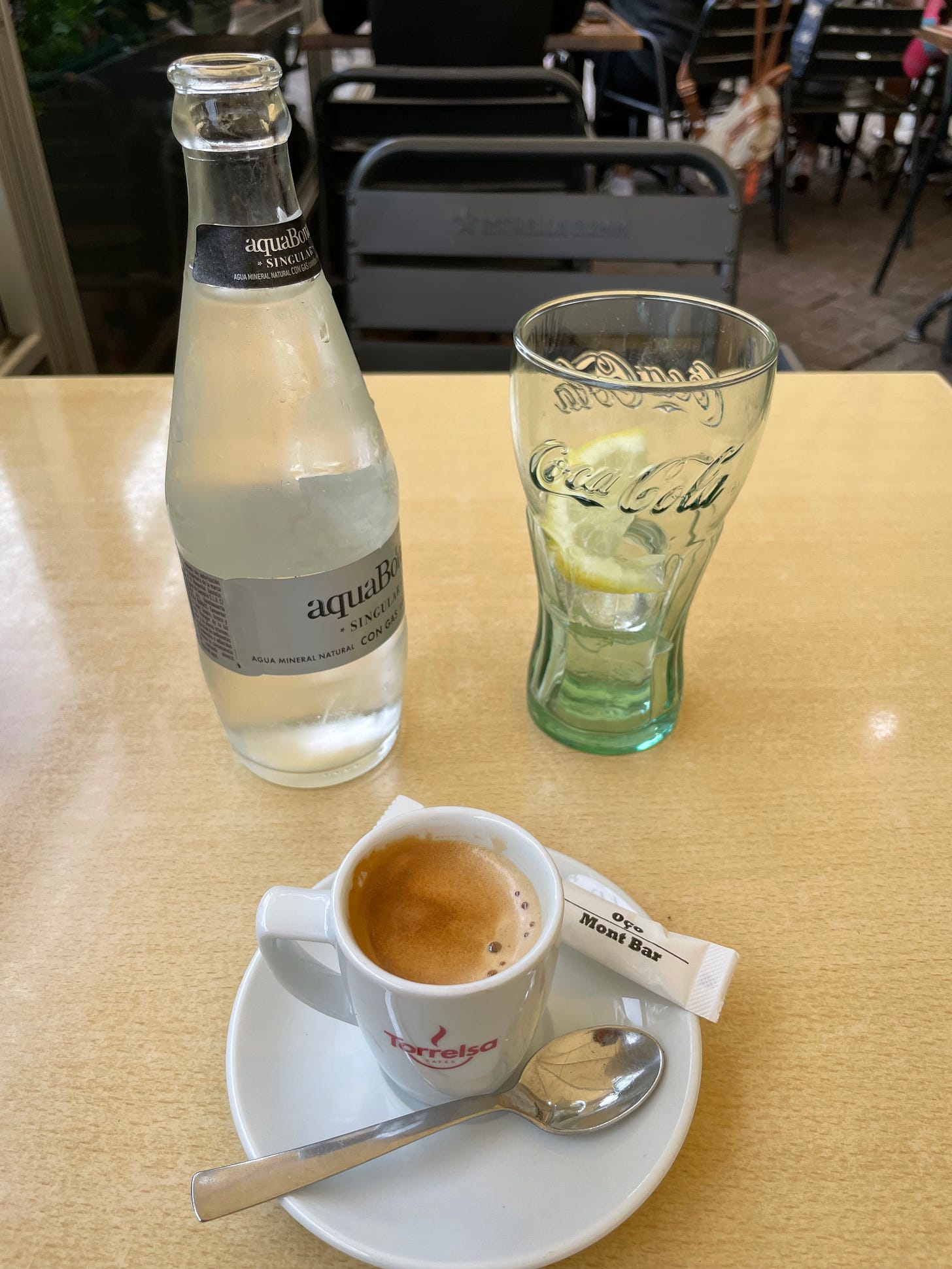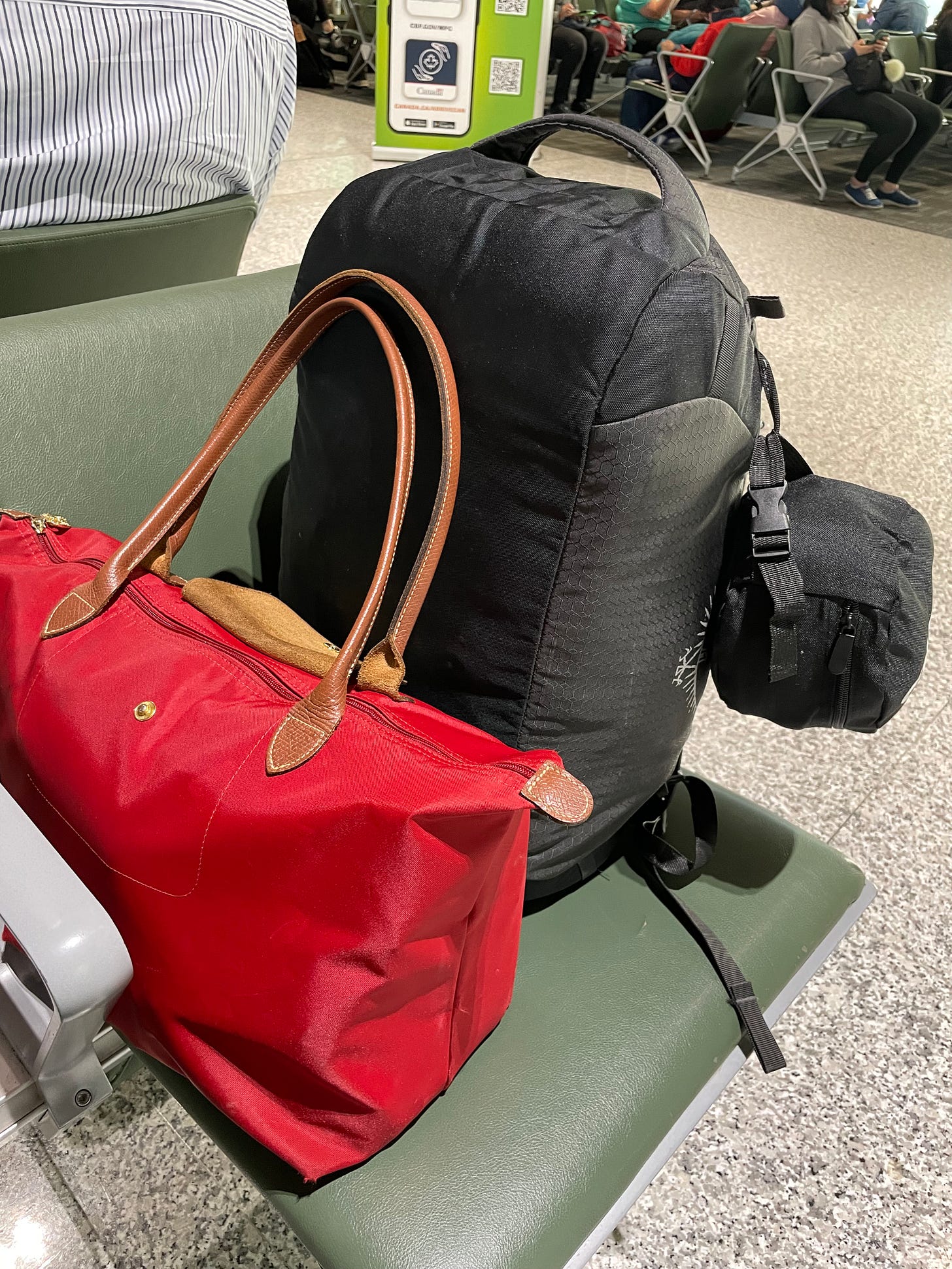30 days, 2 bags, and 1 happy runner
A month of touring and running while working remotely in Europe
A month in Europe is a classic summer plan if you’re lucky enough to have that option. I’m still a working girl so I had to make my racing, training, and work goals blend well with one another, while making sure I didn’t run out of vacation days. Thus was born my version of a month in Europe: 2 UTMB races each in a different country while working 2-3 days a week, 9am to 5pm EDT, and adding in touristy days every so often. This schedule was suggested by a very empathetic boss who supported my goals (if you have that, you’re golden).

My top insights:
I only had hand-carry luggage, and I know I could have brought fewer things.
I need to choose the seemingly uncomfortable/scary/novel experience to grow.
I will/already am iterate/ing on this experience and create a template.
Minimalism for maximal enjoyment
The main drivers for choosing to bring only carry on luggage are:
Efficiency - no need to wait for luggage upon arrival
Reduced cost - this can be significant specially if moving around a lot
Reduce decision fatigue - I can spend the energy in being present
I stuck to my tried and tested combo: an Osprey 40L Transporter and my Longchamp Le Pliage, both have been used thoroughly over the past decade. I also used NICOSHOW compression packing cubes for the first time and it has become a must-have. If I wasn’t racing I would have been able to travel with just the backpack and make r/onebag happy.
Some things I now know I didn’t need:
the cellphone I borrowed (in case I was pickpocketed in Barcelona)
a tennis ball supposedly for massaging my feet
a physical gratitude journal (I had my regular journal plus Bearable app is now my go-to for gratitude notes)
that “going out” top, makeup, and jewelry (only used makeup twice and even then only used two or three items)
When I arrived in my condo, I was overwhelmed by the amount of stuff I owned. Most are functional, some are sentimental, but I was so overcome that I donated half of my clothes within 24 hours of arrival. Steve Jobs and his turtleneck popularized the idea of a daily uniform for aspiring industry leaders for a reason. When what to wear, eat, and use are decided, that energy can be used for more pertinent, meaningful decisions and experiences instead.
Fighting the familiar = growth
I remember a particular day while in Salzburg — I had signed up for the free walking tour (highly recommended and available in most major touristy cities, by the way) and was on the verge of not going. Similarly, while staying in The Social Hub in Barcelona, I thought I could skip Sagrada Familia (foolish, I know) because I was feeling particularly comfortable in the city after a few days. The Social Hub also had a pitch event that I almost didn’t go to because I was feeling anxious about not being able to speak Spanish or Catalan. That turned out to be an overblown fear.
If I gave in to the sense of familiarity, of staying in because I had more time to spare or because I wanted to doomscroll social media instead, I would have missed out on learning about Salzburg, a fortuitous lunch, a close encounter with the divine, and a reminder that originality is not the ultimate differentiator or determinant of success.
I think the biggest moment of fighting the familiar came through in Vielha. I was so blown away by how much being there reminded me of the first time I went to Golden, and I knew in my heart a DNF or a DNS was imminent. I fought the DNS, and decided on the DNF instead. It wasn’t the best outcome, but I know I learned from it.
“You spend far more time traveling than you do at your destination.” -Brad Stulberg
The joys of planning, executing, and reflecting
I first thought of racing in Europe around July/August 2022. I registered a couple of months later. I planned my build to a 100km race in one spreadsheet, and a detailed plan for Europe in another. Hundreds if not thousands of websites visited for accommodation, transport, reviews, flights, buses, race information, tourist attractions and traps, plus shopping for travel and race gear, asking where to find a milchautomat or if it’s customary to tip taxi drivers in Spain. I loved every single one of these activities. I want to keep doing it, template it, and talk to anyone about it.
I enjoyed building my plans as well as executing on them. I am still reviewing my expenses and processing the lessons, but so far, here are my top learnings:
Google Sheets > Calendar for planning - here is the template I used to coordinate all of my activities while in Europe. Having it in Sheets made it easier to add notes and links, plus it’s easier to view.
Staying for at least two weeks is the best deal - provided there are enough things to do, this length of time usually unlocks long-term stay pricing and allows you to become familiar enough with the place. If racing, I would stay longer specially if at altitude to acclimate and do at least one key session and gear check.
Free walking tours are great - these are usually available in every major tourist city and can help unlock what you do want to see instead of going to a place just because you feel like you should. It’s pay what you can, which is pretty sweet.
Screenshot all your important documents - I’m talking tickets, travel documents, booking confirmations. Roaming and data are pretty reliable but in the event that they are slow or not available, better to be sure that you have these.
A belt bag is essential - a good one beats any convenient pocket in any bag. My phones, passport, and some cash was always within reach and I never took it off while on a plane or bus.
BONUS: SOAK no-rinse laundry soap is necessary if you’re away for more than a week and where you’re staying doesn’t offer laundry services.
I’m already envisioning the next trip, and looking forward to applying what I’ve learned.





